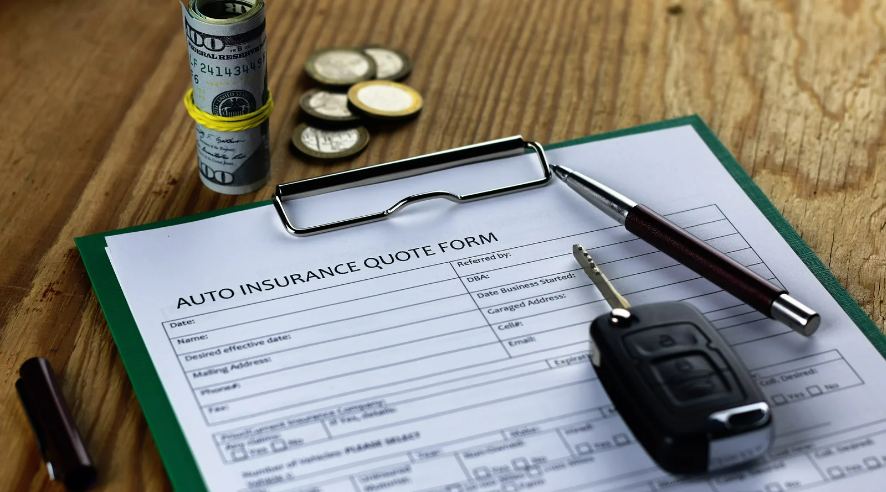Maximizing Your Auto Insurance Coverage: A Comprehensive Guide
- 15 January 2022

Auto insurance is a crucial aspect of vehicle ownership. It offers financial protection in case of accidents, theft, or any other type of damage to your car. However, with the vast number of insurance policies available, it can be confusing and overwhelming to select the right coverage for your needs. This article will help you understand the basics of auto insurance and provide you with tips to maximize your coverage.
Types of Auto Insurance
First, it is important to understand the different types of auto insurance coverage. The most common types of coverage include liability, collision, comprehensive, and uninsured/underinsured motorist coverage. Liability coverage is required by law in most states and covers damage or injury that you cause to another person or their property. Collision coverage covers damages to your own vehicle in case of an accident. Comprehensive coverage covers damage to your vehicle from non-collision events, such as theft or natural disasters. Uninsured/underinsured motorist coverage provides protection in case you are hit by a driver who does not have insurance or does not have enough coverage.
Budget and Needs
When choosing an insurance policy, it is important to consider your personal needs and budget. For example, if you have a newer car, you may want to opt for more comprehensive coverage to protect your investment. On the other hand, if you have an older car, you may choose to skip comprehensive coverage and focus on liability and collision coverage. It is also important to consider the cost of insurance when selecting a policy. High coverage can lead to high premiums, so it's essential to find a balance between the coverage you need and the price you're willing to pay.
Next, consider the deductible, which is the amount you will pay out of pocket before your insurance kicks in. A higher deductible can lower your monthly premium, but it also means that you'll have to pay more out of pocket if you need to file a claim. On the other hand, a lower deductible means a higher monthly premium, but less money out of pocket in case of a claim.
Another factor to consider is the insurance company you choose. It is essential to choose a reputable insurance company with a good track record of handling claims efficiently. You can compare rates and coverage options from different insurance companies to find the best deal. Be sure to read the fine print and understand what is covered and what is not covered in each policy.
Finally, you can maximize your coverage by being a responsible driver. Avoid accidents and follow traffic rules to reduce your risk of being in a collision. Additionally, keep your vehicle well-maintained to prevent theft and other non-collision events.
Points of auto insurance coverage to add more value to the article
One important aspect of auto insurance is liability coverage. This coverage is mandatory in most states and provides protection in case you cause damage or injury to another person or their property. The liability coverage limit is the maximum amount that the insurance company will pay for a covered claim. It is crucial to choose a liability coverage limit that is high enough to protect your assets in case of a lawsuit.
Collision coverage is another important aspect of auto insurance. This coverage provides protection in case you are involved in an accident, regardless of who is at fault. Collision coverage will pay for repairs to your vehicle or its replacement if it is damaged or destroyed in a covered collision. This coverage is particularly important if you have a newer or expensive vehicle.
Comprehensive coverage is also a key aspect of auto insurance. This coverage provides protection for non-collision events, such as theft, natural disasters, or damage from falling objects. Comprehensive coverage will pay for repairs or replacement of your vehicle if it is damaged in a covered event. It is important to note that comprehensive coverage may not be necessary for older vehicles with a lower value.
Uninsured/underinsured motorist coverage is a lesser-known type of auto insurance coverage, but it is crucial for protecting yourself in case you are involved in an accident with an uninsured or underinsured driver. This coverage provides protection for medical expenses, lost wages, and other expenses if you are hit by an uninsured or underinsured driver. This coverage is particularly important in states with high rates of uninsured drivers.
In addition to the standard types of auto insurance coverage, there are also optional coverage options that you can add to your policy. These options include personal injury protection, roadside assistance, and rental car coverage. Personal injury protection provides coverage for medical expenses and lost wages in case of an accident. Roadside assistance provides help in case of a breakdown, flat tire, or other emergency. Rental car coverage provides reimbursement for a rental car in case your vehicle is in the shop for repairs after a covered event.
In conclusion, auto insurance is an essential aspect of vehicle ownership. By understanding the different types of coverage, considering your personal needs, choosing the right insurance company, and being a responsible driver, you can maximize your coverage and ensure that you're protected in case of an accident or other unforeseen events.




